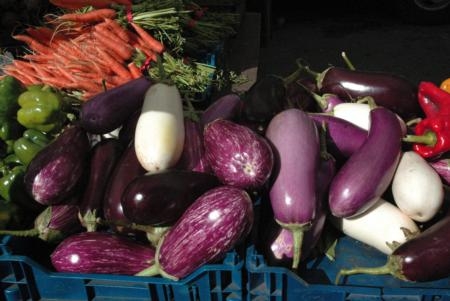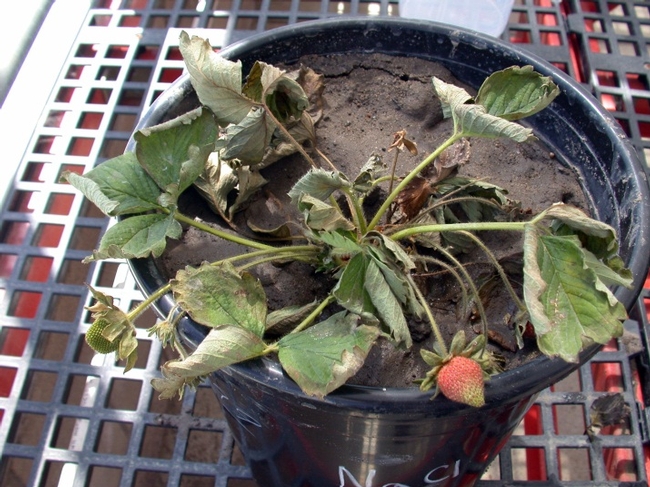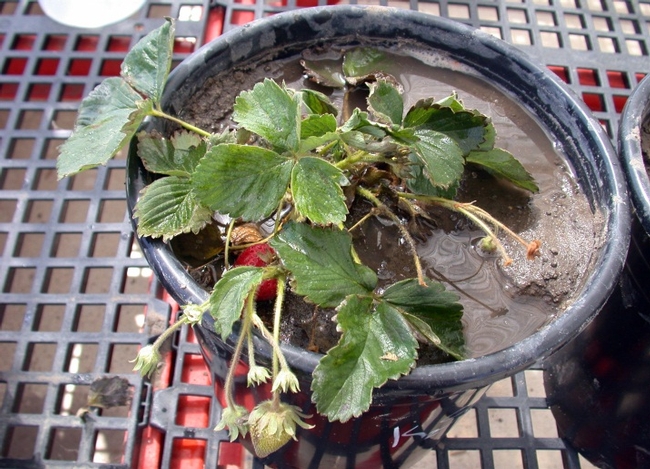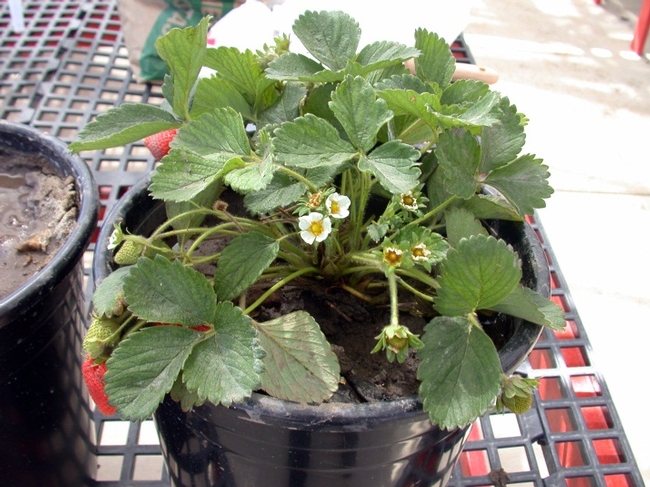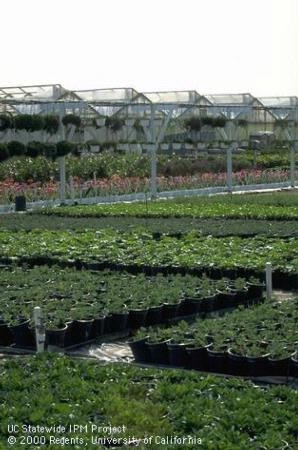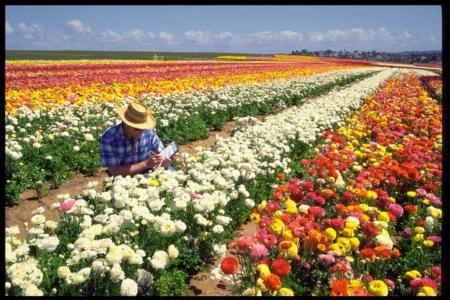
Posts Tagged: farming in Ventura County
Apium virus Y on celery in coastal California
California farms produce 93% of the celery grown in the United States. The crop thrives in coastal California’s moderate climate. Celery is an important crop in Ventura County with 40% of the state’s acreage farmed here. Valued at over $182 million, it was the second most profitable crop for Ventura County agricultural producers in 2010, which are the most recent statistics available.
Most celery in the field is planted as transplants. Transplants are typically grown under high humidity and high plant density conditions and are subject to seedborne pathogens. The most significant being Septoria apiicola (the causal agent of Septoria late blight) and Pseudomonas syringae pv. apii (the causal agent of bacterial blight). These diseases can be carried from the transplants into the field. As the plants mature, these diseases can cause plants to become unmarketable at a great loss to the growers.
UCCE’s Oleg Daugovish and collaborators researched these pathogens and how to best reduce disease and loss in the field. Over four years, the researchers documented that: seed, seedlings, weeds located in or near fields that harbor the virus can cause the disease in celery. This disease is likely transmitted by aphids, vectoring the virus.
The studies provided practices growers can use to manage this disease. Findings indicated that growers can control the pathogens by managing poison hemlock weed populations, controlling aphids, and planting celery cultivars that are not susceptible to the pathogens.
The interpretive and technical summaries of the research report can be viewed on this page of the USDA’s Agricultural Research Service. The full text can be accessed through the American Phytopathological Society, or at the UCCE office in Ventura County.
Not all salts are created equal
We have many highly salt sensitive crops in Ventura County: strawberry, avocados, blueberries. Rainwater, the purest kind, is excellent for leaching salts, but, in years with low rainfall, salt accumulation and resulting toxicity is a big concern.
Plant reaction to salts varies among varieties, stages of growths and environmental conditions and, perhaps most importantly, with the type of salts that they are exposed to. We typically determine salinity of water and soil by measuring Electrical Conductivity (EC): the more salts are present the greater is the capacity to conduct electric current. In fact, there are guidelines for most crops that show at which EC level you would expect negative effects on plant growth and productivity. Yet there seems to be a discrepancy between the guidelines and what actually happens in the field. For example, University of California (UC) guidelines suggest that strawberry injury and yield reductions can occur at EC=1 dS/m. However, in several Ventura County fields we have healthy productive strawberry in soils with EC >4 dS/m. These large differences in tolerable EC levels result from the fact that the guidelines were developed using sodium chloride, while Ventura county soils/waters most frequently have calcium and sulfates as primary components of EC. Recent studies at UC Riverside showed the specific negative chloride effect on strawberry fruit production, while studies elsewhere have documented that sodium can also be more harmful than other ions such as calcium and potassium. Because we have calcium-rich soil, and even irrigation water often contains calcium sulfate, our crops can manage well even with EC levels well above 1 dS/m. In fact calcium and magnesium help to counteract the negative effects of sodium in the soil salt solution.
In a demonstration, we wanted to show that a very salty water (EC=20 dS/m) will have different effects on mature strawberry plants depending on the ion composition of the salts in that water. Indeed, after four days of watering with sodium chloride solution, the plants had severe injury symptoms and were dying. However, the same salt concentration of potassium sulfate only resulted in slight marginal leaf burn and mild stunting. Plants irrigated with distilled water (that imitated rain water) looked perfect, of course.
The important points of these demonstrations and field evaluations were:
- EC values in water or soil analyses only show total salinity and one needs to look at specific ions in the report to evaluate the potential effects on sensitive plants.
- Sodium and chloride are a lot more damaging that potassium and sulfate and we’re planning to evaluate several other salts and develop realistic thresholds for safe strawberry production in their presence.
- At high concentrations in the root zone fertilizers (such as potassium sulfate, a ‘safer’ salt) can injure plants and reduce their productivity
- Typical irrigation with drip lines placed between planting rows does not affect salts in the root system, unless excessive amount of water are applied to induce leaching.
What is agriculture?
Agriculture is more than food production. The term is used to describe the human cultivation of food, fiber and other products. Many people think of food farming and raising of livestock as the extent of agriculture, but there is much more to this powerful industry.
For approximately 10,000 years agriculture has shaped civilization. And in fact some say that agriculture has made civilization possible. Agricultural progress allowed groups of people the first alternative to a hunter-gatherer lifestyle. Continual improvements in methods and technology took people from subsistence agriculture to production levels. As the production continued to increase fewer people were needed in food and fiber production and were able to focus on other pursuits and careers.
Today agriculture includes foods, fibers, biofuels, biopharmaceuticals, bioplastics, lumber, cut flowers and nursery plants. New agricultural technologies already available and those in the research stage will continue to shape, expand and influence society both locally and globally.
Ventura County has a wide range of agricultural products and production. The size of our local farms are smaller than average; however, our growers efforts combine to form an impressive cumulate result. Using data from the most recent USDA Ag Census Profile, the market value of Ventura County agriculture is ranked 9th statewide and 10th nationwide. When the value of nursery and greenhouse crops are included our county is 4th both state and nationwide. To learn more about the types of agriculture products grown in Ventura County please see the crop reports released by the County of Ventura Agricultural Commissioner.
In addition to crop values, the local agriculture industry branches out and positively impacts our local economy with, transportation/shipping, packing houses, product manufacturing and development, landscape design and maintenance, and much more.
Nursery and Floriculture Alliance Education Programs
UC’s Nursery and Floriculture Alliance has many trainings scheduled, including several in Southern California. You can find program details on their website.
Also on the site, you will find archived presentations available for viewing and links to resources to help growers conserve irrigation water and manage water quality issues.
The nursery and floriculture industry is big business in Ventura County. Even after experiencing a decline in sales during the recession, the most recent crop report lists nursery stock as our third highest value crop at $180,057,000 (down from $298,690,000 in 2007-2008). Cut flowers are in the number four spot and brought in $47,348,000 (down from $51,297,000 in 2007-2008).
This map shows where these crops are grown within the county.
Ventura County Agricultural Summit 2012
Presented by the Ventura County Ag Futures Alliance last month’s agricultural summit set out to increase connections and support between the local agricultural industry and the larger community.
Approximately 250 community stakeholders (farmers, ranchers, distributors, buyers, chefs, policy makers, public health advocates, community planners, and others) attended the Making Connections: How the Local Food Movement Can Support Ventura County Agriculture themed event.
Agriculture is an important part of our local economy. Like any other industry, agriculture has its share of challenges and opportunities. Shared dialog between producers and consumers within our area provides a wonderful bridge to reduce and minimize challenges while finding ways to increase awareness and collaboration. Attendees discussed distribution systems, public health, land use, childhood obesity, urban encroachment, pesticides, labor needs, water, and the need for fresh food education and marketing,
Additional information about the summit, and the issues discussed, can be found at the Ag Innovations Network website, this Ventura County Star article, and this radio piece by KCLU.
Support for this program came from many in the community. Sponsors include the UC Thelma Hansen Fund. The purpose of the Hansen Fund is to support and maintain University research and extension activities for the sustainability and benefit of agriculture and natural resources in Ventura County. A complete list of donors can be found here.
